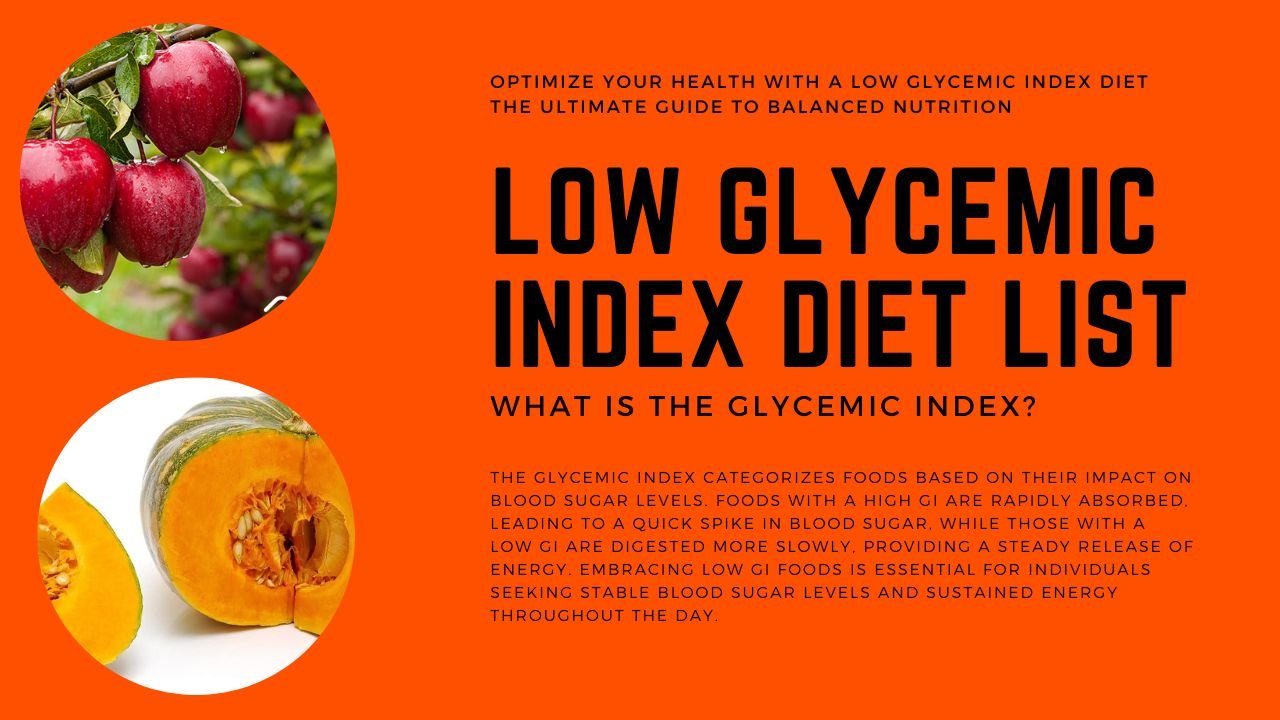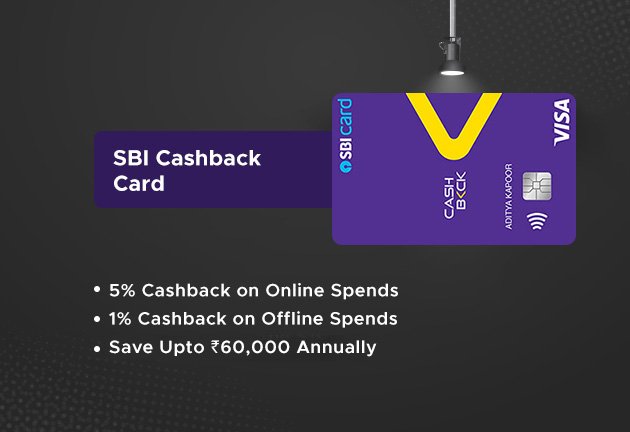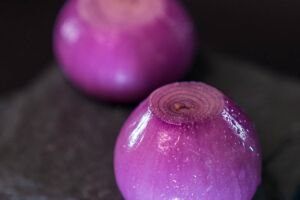Introduction: Understanding the Low Glycemic Index Diet
Low Glycemic Index Diet must be identified to live healthy life. In today’s fast-paced world, maintaining a healthy lifestyle is more crucial than ever before. One dietary approach that has gained significant attention is the Low Glycemic Index (GI) Diet. At its core, the Low GI Diet revolves around consuming foods that have a low glycemic index, a ranking system that measures how quickly carbohydrates in food raise blood sugar levels. This diet isn’t just a temporary solution; it’s a sustainable way of eating that promotes overall health and well-being.
What is the Glycemic Index?
The Glycemic Index categorizes foods based on their impact on blood sugar levels. Foods with a high GI are rapidly absorbed, leading to a quick spike in blood sugar, while those with a low GI are digested more slowly, providing a steady release of energy. Embracing low GI foods is essential for individuals seeking stable blood sugar levels and sustained energy throughout the day.
The Benefits of Low Glycemic Index Foods
- Stable Blood Sugar Levels: By choosing low GI foods, you can maintain stable blood sugar levels, reducing the risk of diabetes and managing existing diabetes more effectively.
- Sustained Energy: Low GI foods provide a steady release of energy, keeping you feeling full and energized for longer periods, making it easier to maintain a healthy weight.
- Improved Heart Health: Studies have shown that adhering to a low GI diet can lower the risk of heart disease by improving cholesterol levels and reducing inflammation.
- Enhanced Weight Management: Incorporating low GI foods can contribute to weight loss and prevent excessive weight gain.
- Better Diabetes Management: The Low GI Diet is particularly beneficial for individuals with diabetes, as it helps manage blood glucose levels.
- Improved Satiety: Slow digestion promotes a feeling of fullness, aiding in weight management by reducing overall calorie intake.
List of Low Glycemic Index Foods
| Food | Glycemic Index | Nutritional Contents |
|---|---|---|
| Cherries | 22 | Rich in antioxidants, Vitamin C, Potassium, Fiber |
| Grapefruit | 25 | High in Vitamin C, Fiber, Phytonutrients |
| Apples | 38 | Contains Vitamin C, Dietary Fiber, Antioxidants |
| Pears | 38 | Good source of Dietary Fiber, Vitamin C, Potassium |
| Plums | 39 | Rich in Vitamin K, Vitamin C, Potassium, Dietary Fiber |
| Oranges | 43 | High in Vitamin C, Folate, Antioxidants |
| Broccoli | 10 | Excellent source of Vitamin K, Vitamin C, Fiber |
| Cauliflower | 15 | Vitamin C, Vitamin K, Phytonutrients |
| Spinach | 6 | Iron, Calcium, Vitamin K, Folate |
| Kale | 15 | Vitamin K, Vitamin A, Antioxidants |
| Zucchini | 20 | Vitamin C, Manganese, Dietary Fiber |
| Green Beans | 30 | Vitamin K, Vitamin C, Folate |
| Barley | 28 | Dietary Fiber, Manganese, Selenium |
| Quinoa | 53 | Protein, Dietary Fiber, Magnesium, Iron |
| Lentils | 32 | Protein, Dietary Fiber, Folate, Iron |
| Chickpeas | 28 | Protein, Dietary Fiber, Folate, Manganese |
| Kidney Beans | 24 | Protein, Dietary Fiber, Iron, Potassium |
| Sweet Potatoes | 61 | Vitamin A, Vitamin C, Dietary Fiber, Potassium |
| Brown Rice | 50 | Manganese, Selenium, Magnesium, Dietary Fiber |
| Yogurt | 14 | Calcium, Protein, Probiotics, Vitamin B12 |
List of High Glycemic Index Foods
| Food | Glycemic Index | Nutritional Impact |
|---|---|---|
| White Bread | 75 | Low in fiber, lacks essential nutrients |
| White Rice | 73 | Stripped of bran and germ, low in fiber and nutrients |
| Potatoes | 85 | High in carbohydrates, low in fiber when peeled |
| Cornflakes | 81 | Low in fiber, often high in added sugars |
| Instant Oatmeal | 79 | Quick-cooking oats with added sugars, low in fiber |
| Pumpkin | 75 | Naturally high in carbohydrates, low in fiber |
| Watermelon | 76 | High in sugars, low in fiber |
| Dates | 103 | Natural sweetener, high in sugars and calories |
| Regular Soda | 63 | High in added sugars, low in nutrients |
| Doughnuts | 76 | Fried, high in sugars and unhealthy fats |
Low Glycemic Fruits List
| Fruit | Glycemic Index | Nutritional Benefits |
|---|---|---|
| Cherries | 22 | Rich in antioxidants, Vitamin C, Potassium, Fiber |
| Grapefruit | 25 | High in Vitamin C, Fiber, Phytonutrients |
| Apples | 38 | Contains Vitamin C, Dietary Fiber, Antioxidants |
| Pears | 38 | Good source of Dietary Fiber, Vitamin C, Potassium |
| Plums | 39 | Rich in Vitamin K, Vitamin C, Potassium, Dietary Fiber |
| Oranges | 43 | High in Vitamin C, Folate, Antioxidants |
Conclusion
Incorporating the Low Glycemic Index Diet into your daily life isn’t just a choice; it’s a commitment to your overall health and well-being. By understanding the science behind the glycemic index, embracing the right foods, and creating balanced meals, you can enjoy sustained energy, stable blood sugar levels, and improved overall health. Make the switch to the Low GI Diet today and embark on a journey to a healthier, happier you.
















